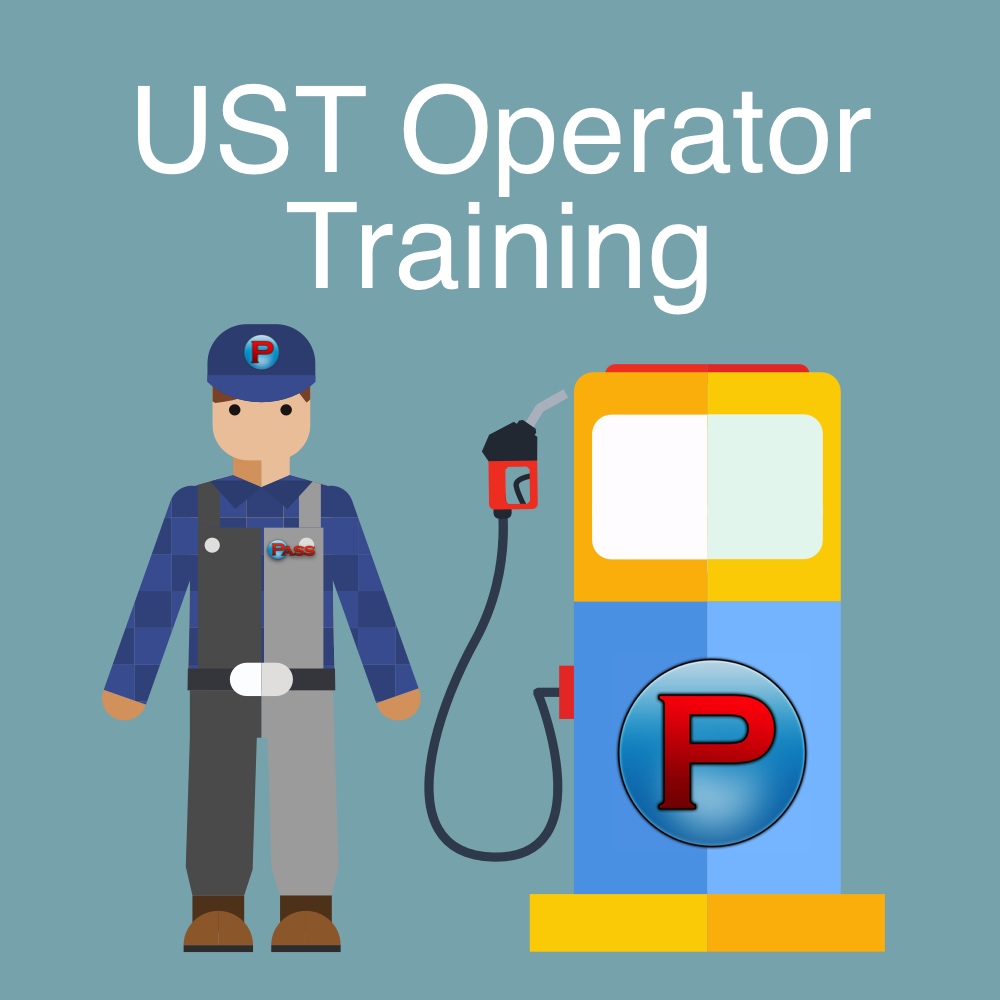Virgin Islands UST Operator Training

UST Operator Certification Procedures
PASS’ UST Class A/B and Class C operator training may be used to train operators at UST facilities in the U.S. Virgin Islands. These are national courses which are designed to meet or exceed the requirements of the Energy Policy Act of 2005 and the Environmental Protection Agency’s (EPA’s) UST regulations (40 CFR 280). All of PASS’ UST operator training courses meet and exceed the federal requirements for UST operator training and are offered through our in-house designed and built Learning Management System (LMS). PASS’ state-specific A/B training courses are custom tailored to meet state requirements, and are accepted by more states than any other training provider. Our courses are available on demand, 24/7 and are accessible from any internet-connected computer, tablet, or phone. The student can complete an entire course in a single session or take the course in segments. The training may be stopped and restarted, allowing for maximum schedule flexibility. PASS also does not impose time restrictions on course access, so students may take as much time as they need to complete their training. Once training is completed a certificate is available to save and print.
Registration & Fees
Any person who owns and operates or intends to install an underground storage tank system or facility shall register each tank with or provide notice to the Department on forms provided by the Department.
The Department requires renewal of UST registrations every two years for owner operators.
The Department will establish and collect reasonable fees in amounts sufficient to cover the cost of processing registrations and renewals.
Release Reporting
A spill or overfill of petroleum product in excess of 25 gallons or that causes a sheen on nearby surface water must be reported to the Department within 24 hours of discovery. Smaller spills or overfills must be reported if they are not cleaned up within 24 hours.
Release Detection
Owners/operators in the U.S. Virgin Islands may use any of the following release detection methods for tanks.
- Automatic Tank Gauge (ATG)
- Secondary containment with interstitial monitoring
- Manual tank gauging
- Tank tightness testing
- Inventory Control
- Vapor monitoring
Delivery Prohibition/Non-Compliance Enforcement
The Department or one of its authorized agents shall prohibit delivery, deposit, or acceptance of product to an UST system if they find that the UST system is in significant violation of one or more regulations. The Department will notify the owner operator in writing of the decision. Once the department has made a determination to initiate a delivery prohibition they will affix a red tag, lock clip, and or padlock to the fill pipe of he non-compliant UST system. Owner operator must resolve issue and contact the Department in writing and they will review the compliance data and or visit the site to confirm compliance.
Temporary & Permanent Closure
Temporary Closure –
When an UST system is temporarily closed, owners and operators must continue operation and maintenance of corrosion protection and release detection in accordance with sections 654-8(b) and 654-14 of these regulations. An owner operator must permanently close an UST system that has been temporarily closed for more than a 12 month time period.
Permanent Closure –
At least 45 days before beginning permanent closure an owner operator shall obtain a permit to close permanently from the Department. Owner operator must empty and clean the tank. All tanks taken out of service permanently must be either removed from the ground of filled with an inert, solid material. Before permanent closure is complete, an owner operator shall measure for the presence of a release where contamination is most likely present at the UST site.
Recordkeeping
All owners and operators of UST systems shall maintain records and information relating to tanks, their associated equipment, their contents, repairs, tank system testing, monitoring analysis and release detection, including inventory controls, for the operating life of the UST system.
4 Products

Marina Add-On Training - Class A/B
Add-On UST Operator Training UST Class A/B Operator Training National
/ 19 Reviews

Marina Add-On Training - Class C
Add-On UST Operator Training UST Class C Operator Training National
/ 29 Reviews

Non-Retail Facility Add-On Training - Class A/B
Add-On UST Operator Training UST Class A/B Operator Training National
/ 19 Reviews

Non-Retail Facility Add-On Training - Class C
Add-On UST Operator Training UST Class C Operator Training National
/ 22 Reviews